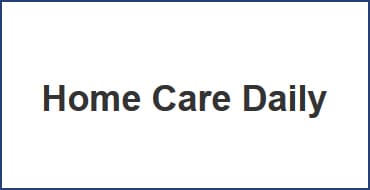 Telecommunications has been an integral part of modern business for the past two decades. It is a form of communication that relies on video, chat, and other features and is often dependent on Internet service providers to make it possible. Today, telehealth is built on the foundation of this technology and is becoming an increasingly vital component of in home health care services.
Telecommunications has been an integral part of modern business for the past two decades. It is a form of communication that relies on video, chat, and other features and is often dependent on Internet service providers to make it possible. Today, telehealth is built on the foundation of this technology and is becoming an increasingly vital component of in home health care services.
Telehealth essentially allows an individual to communicate with a licensed medical professional without having to visit them at a doctor’s office or hospital setting. It is a cost saving feature that allows more adults to remain home, even when and if they are dealing with certain health issues.
Home health care agencies are embracing telehealth with more fervency in recent years. Part of this is due to financial pressures and seeking more cost-effective solutions to client needs, but another part involves a growing number of people who prefer to remain home as opposed to other facility settings, yet they still require medical treatment, observation, and follow-up.
Not only has telehealth increased, there are strong indicators that home health agencies are ramping up their use of this type of technology. As reported by Zoe LaRock, writing for Business Insider in the news blog, Home health agencies are betting on telehealth to grow their businesses over the next couple of years:
“Half of HHAs provide two-way video solutions, and one-third plan to give these services a boost. HHAs can spread their employer bases out by deploying video-enabled telehealth and cut down the time it takes for patients to connect with care professionals. Florida-based Trilogy Home Healthcare — which employs only about 700 employees to serve 3,000 seniors — tapped virtual care provider Synzi in 2018 to provide telehealth services, including video calls, for its patients — in an effort Trilogy said could reduce hospitalizations for seniors suffering from an array of chronic illnesses.”
Finding ways to reduce the cost of long-term and even short-term care for aging Americans is essential, especially in light of repeated past and proposed future Medicaid reimbursement cuts to the home care sector.
43 percent of surveyed home health agencies expect to increase their dependence and usage of telehealth technologies in the coming years. The home healthcare marketplace is expanding and while demand increases, supply of caregivers is on a downward curve due to several factors, including those aforementioned Medicaid reimbursement cuts.
Telehealth may very well fill in the gap and provide aging seniors, disabled adults, and other Americans an opportunity to receive limited health treatments at home and save money in the process.

